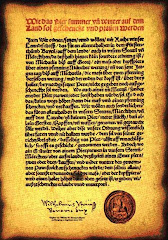
There was an interesting article in the Napa Valley Register on May 25, 2007 by John Waters, Jr. It concerns the application of winemakers and growers in Calistoga, Napa Valley, to have an American Viticultural Area designated for Calistoga. This would be complimentary to areas such as Oakville, Rutherford, and, further down the valley, Carneros. The Alcohol and Tobacco Tax and Trade Bureau is the unlikely name of the federal agency considering the application. The Agency, ATTB, is the one that decides on the naming and geographical definitions of an AVA.
What’s the big deal? If a vintner or grower in Calistoga wants the name “Calistoga” indicated on the label as a designated region of origin, think Medoc or Oakville, at the present time, the label may indicate that the product was produced in Napa Valley. As in Old World wine producing areas, the idea behind AVAs is to indicate a smaller growing area as an indicator of increased quality. This is so because if the idea of terroir has validity, as growing areas become more specific, the quality of the wine is likely to improve; think Burgundy, Chianti Classico, Stag's Leap.
So, if I am a winemaker located in Calistoga and I want to say on my label, Calistoga Bordeaux Meritage, 85% of the grapes used for the wine in the bottle MUST come from Calistoga. As it is now, if I make wine in Calistoga, the most specific region I can designate is NAPA VALLEY. That is why this is a big deal. Families, and wineries in Calistoga for generations, argue that their specific region, Calistoga, has sufficient distinction as a growing area to indicate a specific quality and distinction on the label.
So what is the problem? After all, there are many AVAs in the United States, from California to New Jersey. (I swear, I am not making that up.) The problem is a couple of large volume producers say they will be adversely affected by the Calistoga AVA designation.
Calistoga Cellars and Calistoga Estate wineries source grapes from Napa County and elsewhere; neither company makes wine in Calistoga. Their argument is that they have made money using their trade names and should not be prohibited or limited in where they buy their grapes. If Calistoga were a designated AVA, 85% of these wineries’ grapes would need to come from the Calistoga AVA. And this, of course, the entire reason for having an AVA.
If this sounds familiar, rewind your mind to the dispute between Fred Franzia with his Napa Valley designation on his wines when the grapes did not come from Napa. Caslistoga Estates Managing Director Marvin Stirman says that this is not the same as the Franzia cases as it is an intra-county dispute. But really, it IS the same. These two “Calistoga “ wineries selected their name because the name, in and of itself, has consumer recognition. That is why they chose the names of their iwnes to include Calistoga. The entire idea of Calistoga Cellars and Calistoga Estates is to make money on the name Calistoga. What the local folks are attempting to do is to further define what Calistoga means as a distinct growing area. The fact that this may affect the business of the two established wineries whose names were meant to mislead consumers by suggesting that their wines are somehow associated with the actual geographical area of Calistoga should have no bearing on the issue’s resolution. Also, there is a “grandfather date” for labels with misleading information: 1986. What Calistoga Cellars is proposing is to create another “grandfather date’ to accommodate their individual operation. Imagine if all business regulations were crafted to accommodate each individual business within a category.
If you have an opinion on this let me hear form you. Better yet, tell ATTB.





No comments:
Post a Comment